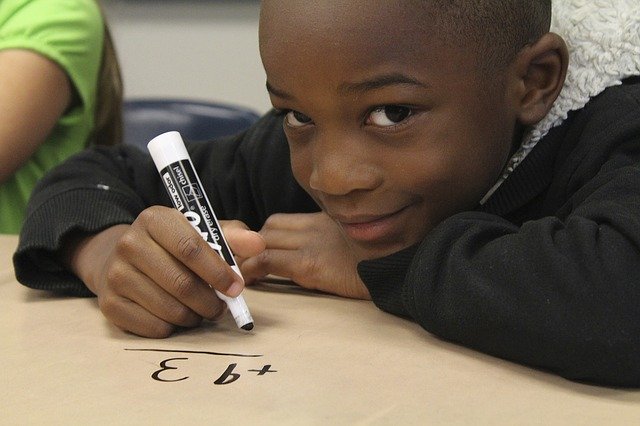Growing up, math was hard for me. It wasn’t until college when I took a class called “Mind Over Math,” a humanities-based course, that I developed a passion for math. For me, the trick was turning complicated math subjects into a language I understood. Looking back, it’s a shame it took so long for me to discover a love for math – I just needed to be taught in a way that worked for me. As a fifth-grade teacher, I’m determined to differentiate my math instruction for each student, providing my students a similar opportunity so they too will develop a love for math.
Today, I teach a class of over 30 fifth grade students at Trace Elementary in the San José Unified School District. My class is incredibly diverse with a variety of skill levels. Close to a third of the students are English Language Learners. Like many classrooms across the country, my students each learn in their own way. This can be challenging when personalizing the learning experience for each student.
Over the years, I’ve learned several techniques that help overcome these obstacles; techniques that seem to really resonate with my students and ultimately help them build math competence while developing math confidence.
Differentiation through collaboration
Separating students into small groups can be a highly effective way to individualize the learning experience for students, however there must be some strategy behind groupwork. In my class, students rotate between four to five stations each week with different learning activities that relate to the unit we are discussing. Before setting up groups, I evaluate students based on pre-tests and DreamBox Learning lesson progress, allowing me to easily group students based on skill level.
Each math station offers a different learning experience for students. For example, a station students love is called “Rally Coach.” At this station, one student plays the “mathematician” and the other plays the role of the “coach.” The coach encourages the mathematician to talk through the problem step by step. This is a great way to individualize the learning experience by simply pairing up students to be mentors to one another.
Student in the driver’s seat
Students value their independence. They want to make decisions about their learning process. When I determine a student might be struggling or is not being challenged enough, we often have “data chats,” one-on-one meetings to talk things through. During these “chats” we pull up the student’s DreamBox completion rates and recent assessment scores and set goals together. I am a big believer in formative assessment because I know student learning is more than just one number or grade. By having these regular check-ins, students are encouraged to take ownership of their own learning. They can easily visualize what they need to do to move forward. Together, we build a roadmap on how to reach their goals.
Don’t be afraid of data
As a former data analyst, I love crunching numbers and developing spreadsheets to track my students’ progress. I believe when teachers have data on where students start and where they need to be, we are best equipped to develop lesson plans that connect the dots. But I also know for many educators, this can be a daunting task. According to a report by the Bill and Melinda Gates Foundation, a large majority of teachers find it difficult to use data effectively and in a timely manner. My advice for teachers would be to start small. Look for ways to leverage technology that automatically draws insights and allows you to focus more on the art of teaching. For example, some edtech tools allow you to insert a student’s NWEA score or Quantile® measure to automatically customize lessons based on where that student is in their learning.
Also, don’t be afraid to take risks and ask for help. When I first started teaching, I knew it would be impossible to provide personalized instruction for over 30 students if I simply stood in front of the class. I decided to collaborate with our district’s Instructional Coach for Elementary Math to develop a Collaborative Learning Experience program, which several classes use today.
Personalized learning comes down to results. While I’ve seen tremendous growth in student achievement across assessments and DreamBox Learning lessons, I feel the best result is student confidence. Recently, one of my previous students who had struggled with math visited my classroom to share she had made it to the highest level in her math program. She credits the improvement to her ability to persevere through tough math problems and a newfound confidence that she can solve even the most challenging problems.
When we differentiate learning for our students, we’re doing so much more than just improving math skills. We’re teaching life skills.
Amber Stagi is a 5th grade teacher at Trace Elementary school at San José Unified School District. Stagi also brings experience teaching mixed classroom environments with multiple grade levels. Prior to becoming an educator, Stagi was a data analyst.
_________________________________________________________________________________________________________________________________________________________________________________________________
Like this article? Sign up for SmartBrief on Math Education to get news like this in your inbox, or check out all of SmartBrief’s education newsletters, covering career and technical education, educational leadership, math education and more.
